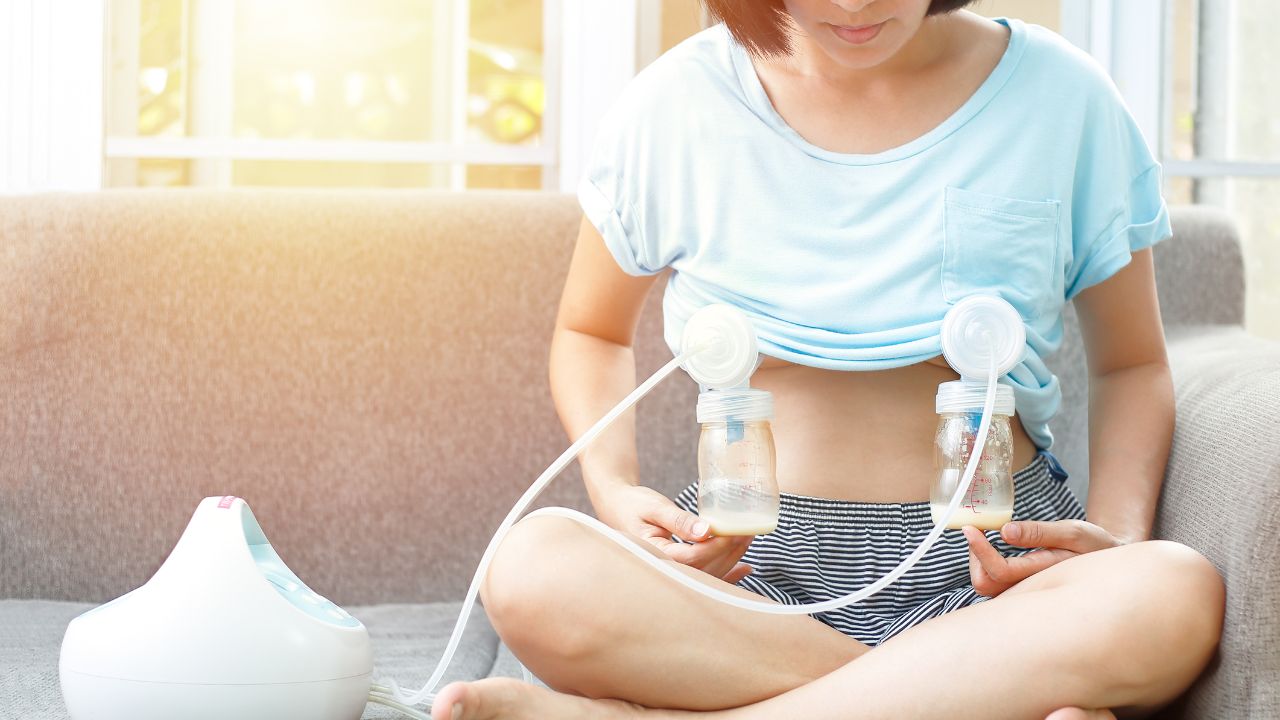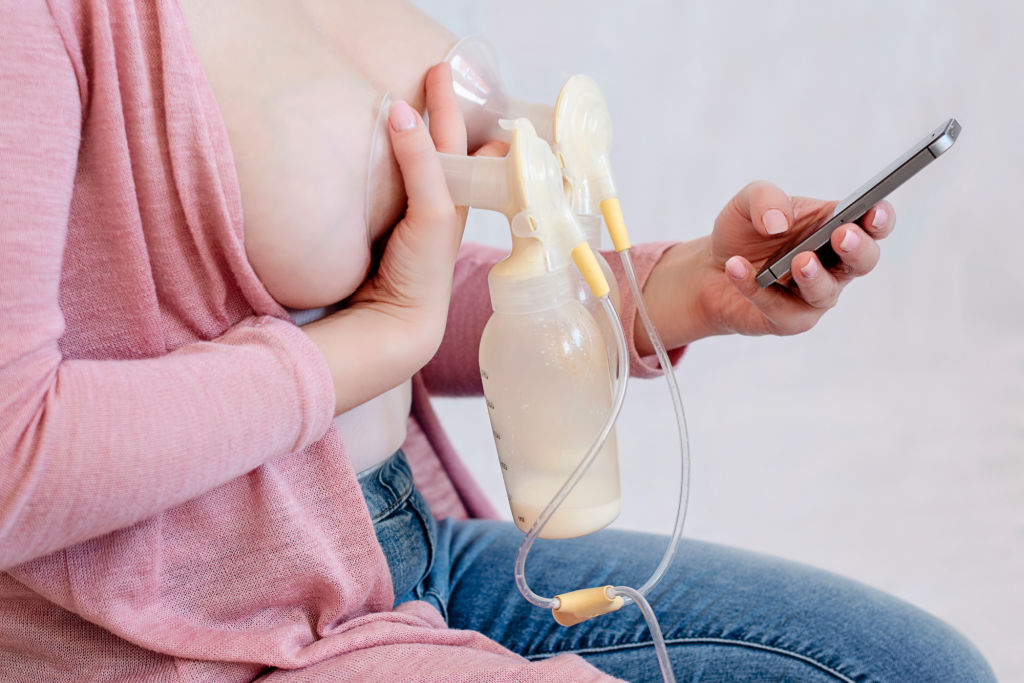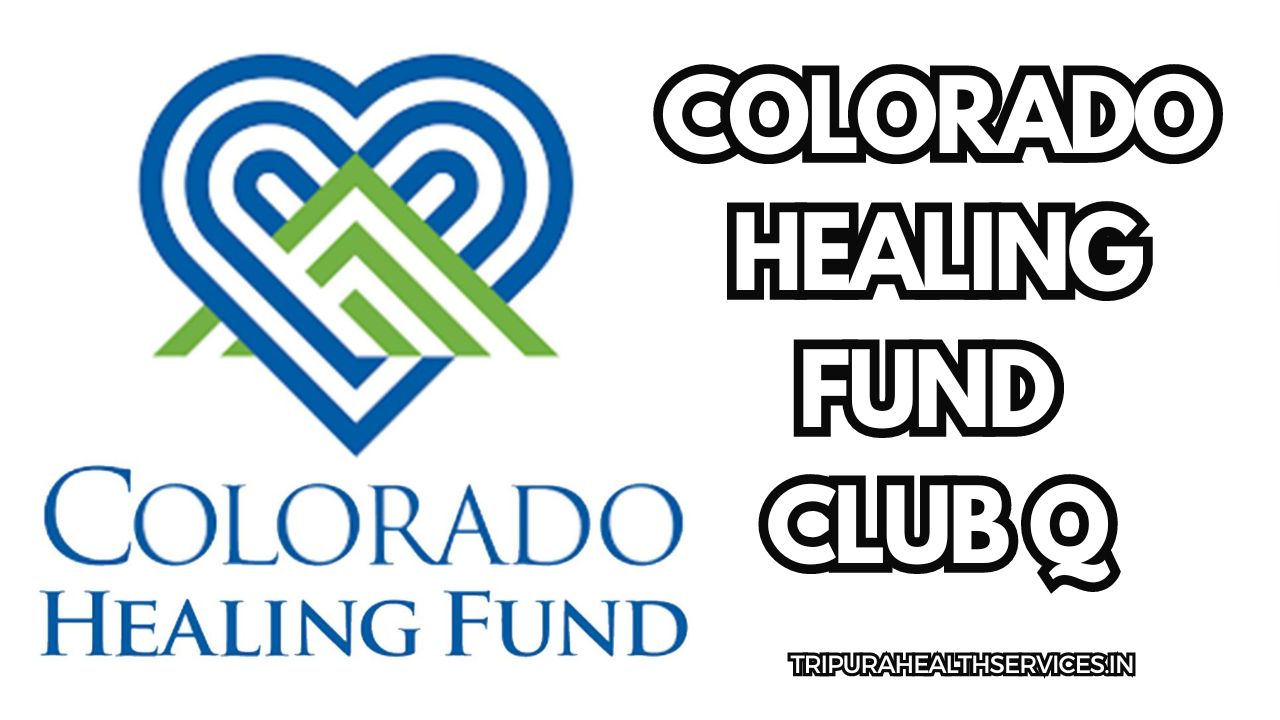Can Warmed Breast Milk Be Refrigerated Again | How Long Is Breast Milk Good for After Warming

Breast milk is important for nursing moms because it gives their babies the nutrients and antibodies, they need to stay healthy. But it can be hard to know Can Warmed Breast Milk Be Refrigerated Again and what to do with extra breast milk, especially when it comes to keeping it cold. Many moms worry about whether or not they can put warmed-up breast milk in the fridge and if doing so would hurt the quality or safety of the milk. In this blog post, we’ll talk about warming up breast milk and putting it in the fridge. We’ll also give you some tips for safely storing breast milk so that your baby gets the best nutrients possible.
Understanding Breast Milk Storage Guidelines
Knowing how to store breast milk is very important if you want to give your baby the best and safest milk possible. By following the right storage instructions, you can keep the nutrients and quality of your breast milk and reduce the chance that bacteria will grow, which could be bad for your baby’s health.
Depending on the temperature and length of time, the way breast milk is stored can be different. Fresh breast milk can be kept at room temperature for up to 4 hours, in the fridge for up to 4 days, or frozen for up to 6 to 12 months. It is important to keep in mind, though, that these standards may change if the baby was born early or has a weaker immune system, for example.
It is also important to know how to store breast milk the right way. For example, breast milk should be kept in clean, sterile containers made just for that purpose, like glass bottles or BPA-free plastic bags or bottles. Also, write the date and time on the container to make sure you use the milk that was made the most recently.
Follow these steps and learn the best ways to store breast milk, whether you use fresh, refrigerated, or frozen milk. This will help make sure that your baby gets safe and healthy milk.
Can Warmed Breast Milk Be Refrigerated Again
What Happens to Breast Milk When It’s Warmed Up?
Breast milk can be warmed up for many reasons, such as if it has been stored in the fridge or freezer or if the baby likes warm milk. But it’s important to know what happens to breast milk when it’s warmed up to make sure it’s still safe and healthy for your baby.
If you heat breast milk, it might change in a few ways. First, the fat in the milk may separate and rise to the top. This is a normal thing that doesn’t affect the quality or safety of the milk. When you feed your baby, give the bottle or bag a gentle shake to mix the fat back into the milk.
Second, warming breast milk can make some of the vitamins and antibodies in the milk disappear. But the loss is small, and it doesn’t have a big effect on the milk’s nutritional value.
Lastly, it’s important to heat breast milk slowly and evenly to avoid overheating, which can damage the good parts of the milk and create hot spots that can burn your baby’s lips. Putting the bottle or bag of breast milk in a bowl of warm water or using a bottle warmer are good ways to warm it up. It is very important not to heat breast milk in the microwave because this can cause hot spots and damage some of the milk’s most important parts.
Even though warming breast milk may change it in some ways, it is still a safe and healthy option for your baby. You can make sure that your baby gets the best nutrition from your breast milk by warming it the right way and keeping it and using it the right way.
Can You Refrigerate Breast Milk Again After Warming It Up?
Once breast milk has been warmed, it shouldn’t be put in the fridge. When breast milk is brought to room temperature or warmed up, it should be used within two hours. If you refrigerate breast milk that has already been warmed, bacteria may grow, which could make your baby sick. If you have warmed-up breast milk that you haven’t used, it’s best to throw it away instead of putting it in the fridge.

5 Factors That Affect the Quality of Breast Milk After Refrigeration
There are many things that can change the quality of refrigerated breast milk, which can change how healthy and nutritious it is for your baby. Here are a few things to consider:
- Length of Refrigeration: The longer breast milk is refrigerated, the more likely it is to lose some of its nutritional value.
- Temperature: Breast milk should be stored in the back of the refrigerator at a temperature of 32–39°F (0–4°C). If the temperature is too warm or too cold, it can affect the quality of the milk.
- Hygiene: Proper hygiene practices, such as washing hands before expressing milk and using clean containers, can help prevent bacterial contamination of breast milk.
- Mixing: When you warm up refrigerated breast milk, it’s important to gently swirl or mix the milk to redistribute any fat that may have separated.
- Freezing and Thawing: If you freeze and thaw breast milk repeatedly, it can also impact the nutritional value of the milk.
You can help make sure that your baby gets the best nutrition from your breast milk by knowing about these things and following the right ways to store and handle breast milk.
Tips for Storing and Handling Breast Milk Safely
Safely storing and handling breast milk is important to make sure that your baby gets the best nutrients and stays healthy. Here are some things to think about when storing and handling breast milk to keep it safe:
- Wash your hands: Always wash your hands thoroughly with soap and water before handling breast milk.
- Use clean containers: Use clean and sterile bottles or bags specifically designed for storing breast milk. Make sure to clean them properly before and after use.
- Label the containers: Label each container with the date the milk was expressed to ensure that you use the oldest milk first.
- Store breast milk properly: Freshly expressed breast milk can be stored at room temperature for up to 4 hours, in the refrigerator for up to 4 days, and in the freezer for up to 6-12 months.
- Store milk in small portions: It’s best to store breast milk in small portions (2-4 ounces) to prevent waste and to ensure that the milk is used within a reasonable time frame.
- Don’t add fresh milk to already refrigerated milk: Avoid adding freshly expressed breast milk to already refrigerated milk, as this can increase the temperature of the refrigerated milk, which can encourage bacterial growth.
- Thaw breast milk safely: When thawing frozen breast milk, do it in the refrigerator, in a bowl of warm water, or using a bottle warmer. Never thaw breast milk in the microwave or on the stove.
By following these rules, you can help make sure that your breast milk is stored and handled safely and that your baby gets the best nutrition possible.
How to Reheat Breast Milk Safely
You can safely reheat breast milk for your baby, but you must follow strict rules to make sure the milk stays safe and healthy. Here are the steps for warming up breast milk the right way:
- Take the milk out of the fridge or freezer and let it sit out for a few minutes so it can warm up. This helps the milk reach a more stable temperature.
- Warm up the breast milk container in a dish of warm water or with a bottle warmer. Do not heat breast milk in the microwave because it can make hot spots that can burn your baby’s mouth and hurt some of the important parts of the milk.
- Gently swirl or stir the milk to mix up any fat that has settled to the bottom.
- Check the temperature of the milk before giving it to your baby. Put a few drops on your wrist to make sure it’s neither too hot nor too cold. It should be warm, but not too hot.
- Breast milk that has been warmed up should be used within two hours. Don’t keep milk that you don’t use..
If you follow these steps, you’ll be able to safely reheat breast milk for your baby and make sure that they get the best nutrients possible.

Signs That Breast Milk Has Gone Bad and When to Discard It
Breast milk is usually safe for babies to drink, but it can go bad if it is not kept or handled properly. Here are some signs that breast milk has gone bad and needs to be thrown away:
- Sour or rancid smell: If the breast milk smells sour or rancid, it has likely gone bad and should be discarded.
- Clumps or chunks: If you notice clumps or chunks in the breast milk, it’s a sign that it has started to curdle and has gone bad.
- Change in color: If the breast milk has changed in color, such as turning yellow or brown, it may have started to spoil and should be discarded.
- Unusual taste: If the breast milk tastes off or has an unusual flavor, it’s a sign that it has gone bad and should not be fed to your baby.
- Separation of milk components: If the milk has separated into layers, it may still be safe to consume, but you should gently mix the milk to redistribute the fat.
Even if your breast milk looks and smells fine, it may still have bacteria that are harmful and could make your baby sick. It’s better to be safe than sorry, so any breast milk that looks bad should be thrown away.
It’s also important to know that breast milk should be used within a certain time frame, even if it hasn’t gone bad. You can keep freshly expressed breast milk at room temperature for up to 4 hours, in the fridge for up to 4 days, or in the freezer for up to 6 to 12 months. Make sure the oldest milk is used first by writing the date on the label.
5 Best Bottle Warmer for Breast Milk
Philips Avent Fast Baby Bottle Warmer
This bottle warmer heats up breast milk quickly and evenly without hot spots. It also has a defrost setting for frozen breast milk.
Dr. Brown’s Deluxe Baby Bottle Warmer
This bottle warmer has an adjustable basket that fits most bottle sizes and a water reservoir that can hold enough water for multiple warming sessions.
Tommee Tippee Closer to Nature Portable Travel Baby Bottle Warmer
This portable bottle warmer is perfect for on-the-go feedings and heats up breast milk in under 4 minutes with no electricity needed.
Munchkin High Speed Bottle Warmer
This bottle warmer heats up breast milk in 90 seconds and has an auto shut-off feature for safety. It also comes with a basket for warming baby food jars.
Kiinde Kozii Bottle Warmer and Breast Milk Warmer
This bottle warmer uses a low temperature, nutrient-safe water bath that is designed to preserve the nutrients and antibodies in breast milk.
Frequently Asked Questions About Breast Milk Storage and Handling
How long can I store breast milk in the refrigerator?
Freshly expressed breast milk can be stored in the refrigerator for up to 4 days.
How long can I store breast milk in the freezer?
Breast milk can be stored in the freezer for up to 6-12 months, depending on the type of freezer and the temperature.
Can I add freshly expressed breast milk to already refrigerated milk?
Avoid adding freshly expressed breast milk to already refrigerated milk, as this can increase the temperature of the refrigerated milk, which can encourage bacterial growth.
How Long Is Breast Milk Good for After Warming
After being warmed, breast milk can be kept at room temperature for up to 2 hours. To stop bacteria from growing, it’s best to throw away any milk left over after feeding your baby. If your baby doesn’t finish a warmed bottle of breast milk, put it in the fridge and use it within 4 hours.
why can’t you add warm breast milk to cold
If you mix warm breast milk with cold milk, the temperatures might not be the same. This could cause bacteria to grow and make the milk less healthy. To make sure the milk is safe and of good quality, it is best to mix breast milk or formula that is the same temperature.






